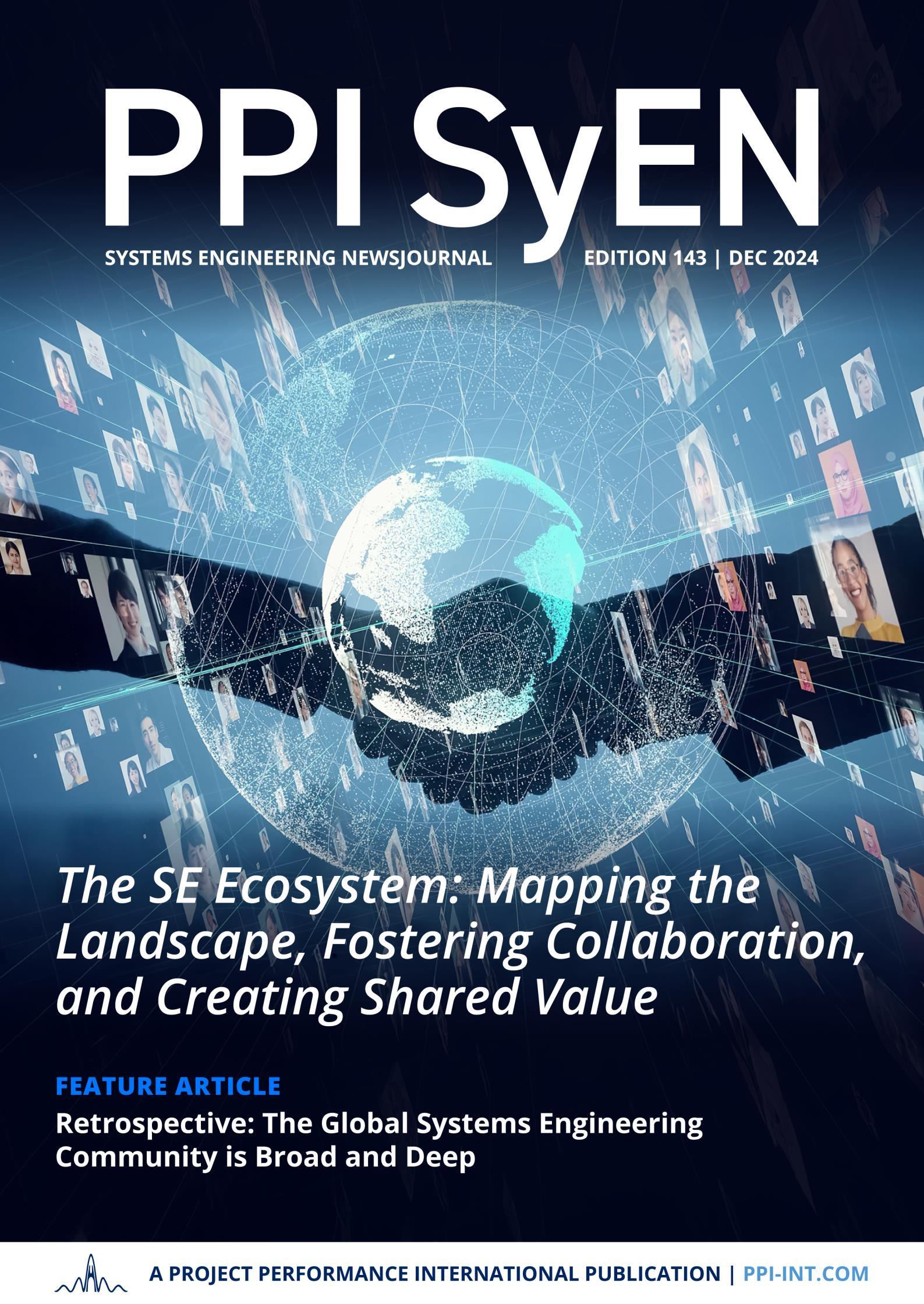

PPI SyEN
EMAIL: PPISyEN@PPI-Int.com


EDITORIAL STAFF
Editor
John Fitch
Editor-in-Chief
Robert Halligan
Managing Editor
René King
PRODUCTION STAFF
Marketing Manager
Benjamin Bryant
Graphic Designer
Matthew Wong
Marketing Coordinator
Rebeca Carneiro
Publishing Assistants
Trudy King
Shalani De Silva
PUBLISHER

Project Performance International
2 Parkgate Drive
Ringwood, Vic 3134 Australia
Tel: +61 3 9876 7345
Tel UK: +44 20 3608 6754
Tel USA: +1 888 772 5174
Tel China: +86 188 5117 2867
www.ppi-int.com
© 2012-2024 Project Performance (Australia) Pty Ltd, trading as Project Performance International
PPI SyEN (PPI Systems Engineering Newsjournal) is published monthly.
Archived editions and subscriptions to future editions are available for free at: https://www.ppi-int.com/syennewsjournal/
WELCOME
Dear Readers,
Welcome to the December edition of PPI SyEN! This month, we celebrate the theme “The Global SE Ecosystem: Mapping, Collaborating, and Creating Shared Value.”
As systems engineering continues to evolve, it thrives on the collaboration, innovation, and diversity of organizations that collectively form our global ecosystem. This month, we reflect on the significant contributions of societies, associations, and consortia that both collaborate or compete to advance systems engineering and shape solutions for complex challenges.
In our feature article, “Retrospective: The Global Systems Engineering Community is Broad and Deep,” John Fitch takes us on a journey through the dynamic landscape of systems engineering organizations. Drawing from over 40 featured societies and contributors showcased in past editions of PPI SyEN, this retrospective highlights key players who have shaped the discipline’s global progress. From longstanding organizations like INCOSE and IEEE Systems Council to emerging platforms like the Digital Twin Consortium, this article highlights the critical role of collaboration and knowledge-sharing in creating shared value.
Complementing the theme, this edition brings updates on practical tools, events, and resources:
• Explore the latest Modelica Association News and additions to the INCOSE SE Lab, including tools like CATIA Stimulus and Reqtify.
• Discover opportunities to grow and connect through events such as the World Championships of Systems Architecture and Modeling and PDMA’s Global Student Innovation Challenge.
• Enhance your systems thinking skills with practical resources, including “Don’t Panic! The Absolute Beginner’s Guide to Systems Thinking” and NAFEMS’ comprehensive Engineering Simulation Resources.
As always, we close with a thoughtful reflection from Syenna, this time exploring the intriguing dynamics of state-dependent system behavior a fitting analogy for the variability and adaptability we encounter in systems engineering and life itself.
As we close 2024, we encourage you to explore new connections, engage with global communities, and set ambitious goals for the year ahead.
We value your feedback at ppisyen@ppi-int.com and look forward to continuing this shared journey with you into 2025.
Warm regards,
René
Managing Editor (on behalf of the PPI SyEN Team)
By John Fitch
“
I believe that quality level is determined primarily by the actual design of the product itself, not by quality control in the production process.
Hideo Sugiura
PPI Systems Engineering Newsjournal (PPI SyEN) seeks:
➢ To advance the practice and perceived value of systems engineering across a broad range of activities, responsibilities, and job-descriptions
➢ To influence the field of systems engineering from an independent perspective
➢ To provide information, tools, techniques, and other value to a wide spectrum of practitioners, from the experienced, to the newcomer, to the curious
➢ To emphasize that systems engineering exists within the context of (and should be contributory toward) larger social/enterprise systems, not just an end within itself
➢ To give back to the Systems Engineering community
PPI defines systems engineering as: an approach to the engineering of systems, based on systems thinking, that aims to transform a need for a solution into an actual solution that meets imperatives and maximizes effectiveness on a whole-of-life basis, in accordance with the values of the stakeholders whom the solution is to serve. Systems engineering embraces both technical and management dimensions of problem definition and problem solving.
SYSTEMS ENGINEERING NEWS
Recent events and updates in the field of systems engineering

Modelica Association News

Modelica is a freely available, equation-based, object-oriented language for convenient and efficient modeling of complex, multi-domain cyber-physical systems described by ordinary differential, difference and algebraic equations. The Modelica Association is a non-profit organization that develops coordinated, open access standards and open source software in the area of cyber-physical systems. The Association publishes a quarterly newsletter. Here are highlights from the latest (November 2024) newsletter.
Project Coordination Efforts
A Modelica Coordination Meeting took place in Hamburg, Germany to address common problems and to distribute workloads among various Association projects. The participants committed to results that include:
• Provision of a free FMU import library
• Lowering the entry barrier for Modelica and SSP (System Structure and Parameterizationsimulation workflows) through development of free educational materials
• Exploration of APIs for Modelica compilers to enable better integration into coding environments and AI tools or build toolchains
Conferences and User Meetings
The American Modelica Conference 2024 took place on 14-16 October in Storrs, Connecticut, USA. Proceedings from this conference have been published - 23 papers are included in this 222-page document.
The annual ModProd and OpenModelica Workshop will be held on 3-5 February in Linköping, Sweden with a theme of Digital Product Development and AI.
Functional Mock-up Interface (FMI) News
The first FMI Advisory Committee Meeting took place on 5 November with 70 participants contributing to topics such as:
• Support for new targets such as aarch64-linux in FMI 2.0
• Security aspects in the exchange of Functional Mock-up Units (FMUs)
• Memory safety requirements for FMUs
• Improve parameterization of FMUs
• Interoperability of Open-USD and FMI
• Increasing visibility of FMI in the US
The FMI Layered Standard for Network Communication (FMI-LS-BUS) is in beta testing. FMI has been selected as the standard exchange format for model components as part of Europe’s Rail Joint Undertaking (EU Rail).
Modelica Vendor News
SYSTEMS ENGINEERING NEWS
Version 1.3.8 of orchideo easySSP has been released with new functionality for workflows, hierarchical parameterization and SSP 2.0 (Beta).
XRG Simulation GmbH has announced the release of a new product, SMArtInt+, which enables simplified hybrid physical and data-driven modelling in Modelica. The Simple Modelica Artificial Intelligence Interface offers Modelica and Python tools that support integration of neural networks of different sources and kinds in Modelica models.
Siemens Digital Industries Software has released Simcenter Amesim 2410 as part of its system simulation solutions, with improvements for accelerated simulations and code generation for Modelica and imported FMUs.
OpenModelica version 1.24.0 was released in October 2024 with numerous fixes, plus updates to the Graphical Editor (OMEdit).
Enhancements in the Modelon 2024.2 release include Beta versions of the new features:
• Analysis View
• Experiment Setup
• Native Calibration Workflow
Single sign-on (SSO) is now supported for Modelon enterprise customers. Updated Modelica libraries include:
• Support for Hydrogen-Powered Aircraft Applications
• Improved Thermal Management Modeling
• Updated Energy Systems Optimization (ESO) Solution
The Modelon Innovate 2024 event took place on 10-11 October in Copenhagen, Denmark.
The November release of Dassault Systèmes Dymola 2025x includes support for variable-length parameter arrays, parameter record creation, improved simulation and code generation speed and FMI co-simulation technology. A Dymola Modelica Compiler (DMC) is now offered as a command-line tool that can translate models, export FMUs, simulate and run mos-scripts.
News from Libraries
The release of TLK’s TIL Suite 2024.1 provides enhanced simulation capabilities for thermodynamic systems including:
• Time-variable specification, control or optimization of geometry variables
• Extended and improved geometry calculation for plate heat exchangers
• Multi-port version of the thermal models for ‘heat’-resistances and -capacitances
• New calculation model for dynamic viscosity in the two-phase region
View details of these and other announcements in the latest Modelica Association newsletter.
Submissions Open for PDMA Global Student Innovation Challenge (GSIC 2025)

The Product Development Management Association (PDMA) has announced the opening of the Global Student Innovation Challenge (GSIC 2025). Submissions will be accepted through 1 June, with finalists announced by 20 June.
The goal of the PDMA Student Innovation Challenge is to provide a platform, purpose and incentives to drive engagement and grow relationships between students, academia, and industry professionals. Specific objectives for this university-level competition include:
• Leveraging students’ passions to learn product development methodologies and frameworks through developing product solutions to real world problems.
• Promoting best practices in product innovation.
• Partnering with professors and industry professionals in the development of the next generation of highly skilled innovators and product leaders.
University student teams who develop an original concept for a product, service, software, or a combination of the three, will develop a submission detailing the unique value proposition, evidence of demand, and mockup or embodiment of product.
Finalist teams will have the opportunity to present their concepts, prototypes, and mockups at PDMA’s Inspire Innovation Conference & JPIM Research Forum from 13-16 September 2025 in Chicago, Illinois, USA.
See more details here. Submit projects through EasyChair.
New Tools added to INCOSE SE Lab
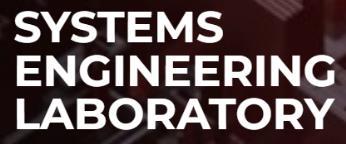
INCOSE has created a Systems Engineering Laboratory (SE Lab), a set of computing environment where INCOSE members can use real, full versions of systems engineering tools for non-commercial INCOSE purposes, for learning, and for INCOSE projects, at no cost to the member or to INCOSE. Products in the SE Lab may be used in combination, as enabled by integrations also provided for such tools.
Two tools from Dassault Systemes were recently added to the SE Lab:
• CATIA Stimulus: A Model-Based Systems Engineering solution to write and test embedded systems functional requirements. Learn more here
• CATIA Reqtify: An interactive End-to-end traceability and impact analysis tool, which can trace artifacts such as requirements, implementations, test, issues and more from system, program and project levels to the entire levels of your software or hardware component development lifecycle. Learn more here
Join INCOSE to access these and other tools. Access to vendor-supplied commercial tools requires completing an additional tool request form.
SYSTEMS ENGINEERING
Digital Twin Consortium (DTC) Launches Digital Engineering Working Group
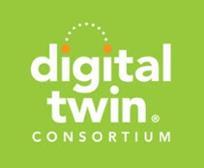
The Digital Twin Consortium (DTC) has announced the formation of a Digital Engineering Working Group focused on model-based development methodologies and digital threads across the digital twin lifecycle phases. The Working Group will develop AI-based deliverables providing methodologies and frameworks for developing, deploying, operating, and maintaining digital twins throughout the system lifecycle.
Deliverables will include:
• Digital Twin Maturity Assessment Framework
• Digital Engineering Throughout the Digital Twin Lifecycle
• Digital Thread & Digital Twin Differentiation
• Generative AI for DE Best Practices & Methodologies
The Working Group’s first product, the Digital Twin Maturity Assessment Framework, is built on the Digital Twin Capabilities Periodic Table and Platform Stack Reference Architecture. The framework aligns with Technology Readiness Levels and digital twin lifecycle phases. It incorporates Generative AI, leveraging a multi-agent system approach.
Read the DTC press release.
Learn more about the Digital Engineering Working Group. Join the DTC.
World Championships of Systems Architecture and Modeling

Vitech has launched a new website heralding the results of its 2024 World Championships of Systems Architecture and Modeling and looking forward to the 2025 encore competition. The goal of the Championships is to offer the best systems engineers the opportunity to achieve industry and domain-wide recognition for their knowledge and proficiency in employing MBSE to devise innovative system solutions.
The 2024 World Championships took place at the Zuken-Vitech Integrate2024 conference in September with the following awards:
• Individual Winner: Jeremy Ross, of Ford
• Team Winners: Tony Sukhwani, Paul Watson, David Rulseh, of Belcan
• Most Innovative Solution: Dan Spencer, of Spencer Tech
Contestants were given a problem statement and used their preferred MBSE toolset to develop and model innovative solutions and present their solutions to a panel of judges. The competition assessed more than raw modeling skills, reflecting the practical constraints and expectations a modeler or modeling team will encounter in industry. The competition evaluated the capacity to create a model and accompanying artifacts that enhance and expedite a more extensive product team’s ability to design, synthesize, integrate, test, and field a system that could satisfy and delight customers.
Plans for the 2025 World Championships are in progress.
SYSTEMS
Updates to the Systems Engineering Tools Database (SETDB)

The Systems Engineering Tools Database (SETDB), developed by PPI in partnership with INCOSE, provides a virtual platform for engineering tool vendors to communicate their latest offerings.
Recent SETDB updates, including both new tools and updates to existing tools, include:
Vendor: Dassault Systemes
• CATIA Magic: Global Model Based Systems Engineering solution to model and simulate the system virtual twin. Includes System of Systems Architect, Software Architect, CyberSystems Engineer, Model Analyst and Collaboration Studio components.
Vendor: OBEO
• Eclipse SysON: The Eclipse SysON project provides an open-source web-based tooling to edit SysML v2 models. It includes a set of editors (graphical, textual, form-based, etc.) enabling users to build the various parts of system models.
• Eclipse Sirius - Web Edition: Easily create and deploy modeling tools to the web Principles you like in Sirius Desktop, available on a modern cloud-based stack.
• Team for Capella: Enables simultaneous authoring of Eclipse Capella models by your team members.
• Publication for Capella: Provides a seamlessly integrated view between your system architecture and related engineering activities (IVVQ, Requirements, etc...).
Vendor: PTC
• Windchill Modeler: PTC's Windchill Modeler (formerly Integrity Modeler) helps your systems and software engineers create consistent, high-quality models to communicate requirements, identify key functions, consider design alternatives, and make good trade-off decisions using UML, SysML or UAF modeling languages.
Vendor: Sensmetry
• SysIDE CE: An open-source SysML v2 textual editing and analysis system. SysIDE (pronounced “seaside”) provides SysML v2 language support in VS Code and can be used an Integrated Development Environment. SysIDE was developed and currently maintained by Sensmetry.
• SysIDE Pro: An enterprise-grade SysML v2 modeling tool that extends the Community Edition with advanced functionality.
Vendor: Siemens Digital Industries Software
• Simcenter System Architect: Offers effortless co-simulation of multiple heterogeneous models, enabling collaboration across domain boundaries and siloes. Product performance can be continuously monitored throughout the design cycle by updating, exchanging, and reusing of simulation assets.
• Simcenter 3D: Simcenter 3D CAE products can import geometry from any CAD source and prepare analysis models for a wide range of CAE methods such as finite element, boundary
element, computational fluid dynamics and multi-body dynamics. the 3D simulations can be linked to testing solutions for unmatched accuracy.
• Simcenter Prescan: Virtually validates Advanced Driver Assistance Systems (ADAS) and automated vehicle functionality using real-world traffic scenarios that include infrastructure, actors, weather and light sources via the system GUI or API. Engineers can adjust all of the environment parameters to modify simulations.
• Simcenter Testlab: A complete, integrated solution for test-based engineering. It combines multi-physics acquisition with a full suite of integrated testing, analytics and modeling tools that covers a wide range of testing needs.
• Simcenter Physical Testing: Provide critical insights for smart products, increase testing productivity and efficiency, maintain quality. and integrate multi-physics data acquisition hardware with a complete suite of data management, analytics, and modeling software, for a wide range of test needs.
• Acoustic Testing: Design, verify and validate the acoustic quality and sound of your products using a broad range of applications that you adjust to your system requirements and conform to the latest international standards.
Vendor: Softwareideas
• Software Ideas Modeler: A lightweight and powerful CASE tool for advanced diagramming. It helps you to describe and design your software and processes using UML 2.5, BPMN 2.0, SysML 1.5, ERD, flowcharts and other diagrams.
Vendor: The REUSE Company
• SES ENGINEERING Studio: Software Tool designed to orchestrate the development of all kinds of systems (hardware, hybrid, software). It allows interoperability between an unlimited number of existing Systems Engineering Tools (RM), MBSE tools, Simulation Tools, Risks Management, RAMS Management, MS Office, etc.).
• SES RAT - AUTHORING Tool: Help authors compose requirement statements or other documentation, improving the project's overall quality. It is available for multiple engineering tools, like PTC Integrity, IBM DOORS and DNG, Microsoft Excel and Word, Capella, and IBM Rhapsody.
• SES Requirements Engineering for MS Word: This connector to MS Word allows you to define, measure, improve, and manage the quality of your requirements specifications. It allows assessment of Correctness, Consistency, and Completeness (CCC), traceability, verification, validation, and maintaining a digital thread.
• SES RQA - QUALITY Studio®: A tool to automate the routine quality inspection and analysis of different engineering items, minimizing the cost of quality appraisals while increasing the quality and overall quality of the projects.
• SES V&V Studio: Merges the three concepts of quality assurance & management while offering V&V by managing the corresponding Verification and Validation Actions through quality measures and other measures.
• SES TRACEABILITY Studio: Users can trace links between key processes to be efficient and effective, such as V&V, requirements definition, architecture definition, design definition or risk management, among others, as defined in the ISO/IEEE 15288/12207 standard.
• SES KM - KNOWLEDGE Manager: Allows you to manage knowledge from the systems engineering point of view and to store valuable information from requirements, models, system architectures and other documents in a common System Knowledge Base.
• SES Interoperability Hub: Allows connectivity and interoperability between all the tools in your ecosystem. A digital thread is maintained and ensures traceability across the system life cycle. The Interoperability Hub establishes a Synchronized Source of Truth (SSoT).
Vendor: UL Solutions
• Stages Process Management: Supports your process journey from initial modeling to integrated process execution at a large scale. Compliance management and feedback capabilities keep your transformation on track and secure its success. Helps you manage complexity with proven process modelling practices.
• Homer® Front: HOMER Front Hybrid Optimization software provides a powerful online web application that helps you model and optimize the technical and economic performance of utility-scale battery energy storage systems (BESS), solar and wind – independently or as hybrid systems.
• WERCS Studio: Chemical compliance management and enterprise SDS authoring software to manage chemical and material data from development through disposal to meet regulatory requirements, create product transparency and enable safer products.
PPI SyEN readers are encouraged to check out these new and updated systems engineering tool offerings.
Access the SETDB website.
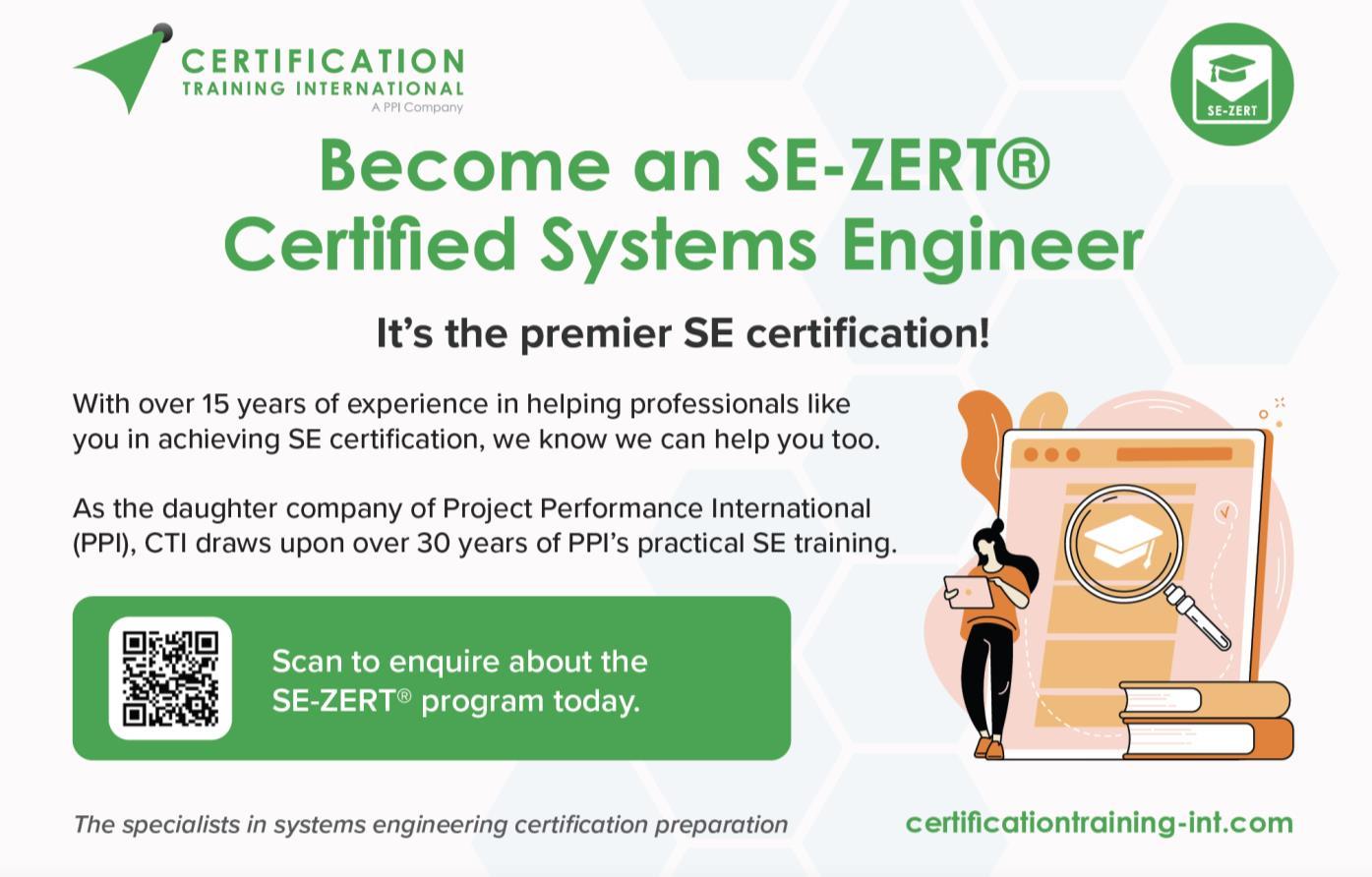
CONFERENCES, MEETINGS & WEBINARS
Events of relevance to systems engineering

Webinar: Generative Artificial Intelligence (AI) in the DoD Acquisition Lifecycle

The Acquisition Innovation Research Center (AIRC) of the U.S. Department of Defense (DOD) will host a free webinar on 6 January 2025 titled “Generative Artificial Intelligence (AI) in the DoD Acquisition Lifecycle”.
Overview:
Recent advancements in generative AI pose an opportunity for the DoD to leverage these capabilities to improve acquisition outcomes. In this webinar we will explore the potential for generative AI to influence the DoD acquisition process and the risks leveraging it may pose. We will hear from experts developing software and pushing the envelope on how the DoD access to generative AI as well as those that test and evaluate such capabilities to ensure they are effective and suitable for operational use. We will explore opportunities to improve acquisition processes that range from new capability development, modernization of legacy capabilities, and test and evaluation.
The panel discussion will be moderated by Dr. Laura Freeman, Deputy Director, Virginia Tech National Security Institute. Panelists include:
• Dr. Douglas C. Schmidt, Director, Operational Test & Evaluation, Office of the Secretary of Defense
• Dr. Heather M. Wojton, Director of the Operational Evaluation Division, Institute for Defense Analyses
• Ms. Alexis Bonnell, Chief Information Officer and Director of the Digital Capabilities Directorate, Air Force Research Laboratory
• Mr. John Robert, Deputy Director, Software Solutions Division, Carnegie Mellon University Software Engineering Institute
Learn more here. Register here
PDMA Webinar: Developing Obsession-Worthy Hardware

As part of its first quarter webcast series focused on design and development strategy, the Product Development Management Association (PDMA) will host a free webinar on 23 January 2025 titled “Developing Obsession-Worthy Hardware”, presented by Gustavo Soares, Global Product Manager at Dell Technologies.
Overview
Explore the fundamental role empathy plays in developing obsession-worthy products. By developing bone-level empathy, teams can begin the design process with a true north star in mind. This empathyplus is not just a feel-good concept - it's a strategic tool that let's managers be more independent and make quicker decisions.
CONFERENCES, MEETINGS & WEBINARS
Key Takeaways
• Define the Empathy Model
• Explain which questions lead to empathy, to vision, and finally a guiding north star in hardware development
• Apply the Empathy Model to a Disney Parks Case Study and an Alienware Case Study
Learn more and register for this event.
System Mapping Academy
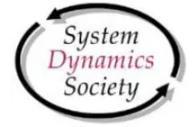
The System Dynamics Society (SDS) is sponsoring the System Mapping Academy’s online instructor-led course designed to help managers, leaders, policy makers, strategic designers, consultants, and entrepreneurs to use participatory system mapping in their context, to visualize complex problems, and to build a shared understanding within the team and with stakeholders. The next round of this course will take place as three half-day sessions on 28 February, 7 March and 14 March 2025.
This training is intended for individuals who want to learn and explore the potential of System Thinking in a hands-on manner and learn about participatory System Dynamics methods, including group facilitation, Causal Loop Diagrams (CLDs), and Group Model Building (GMB) techniques. Students will utilize the System Mapping Toolkit and Group Model Building tools.
Contents of this course include:
• What is System Mapping?
• How to develop System Maps?
• How to apply System Mapping?
Learn more and register here
Discounts are available for SDS members. Join SDS here.
Environmental, Health and Safety (EHS) Congress 2025
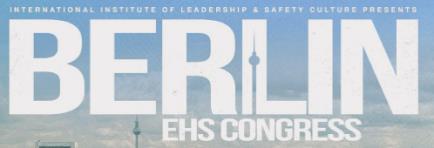
Featured speakers include:
The 2025 Environmental, Health and Safety (EHS) Congress will take place on 20-21 May in Berlin, Germany. Over 300 delegates from 40 countries are expected to attend this in-person event with opportunities to learn from industry leaders and to participate in a diverse range of breakout workshops.
• Andresa Hernandes, Vice President Occupational Safety at Siemens
• Andrew Sharman, Chairman of EHS Congress, Managing Partner at RMS
• Claus Rose, Vice President EHS Renewable, GE
• Diane Chadwick-Jones, former Director of Human Performance at BP
CONFERENCES, MEETINGS & WEBINARS
• Frank Pflueger, Division EHS Director at Caterpillar
Featured workshops include:
• Balancing Act: Aligning Safety Priorities with Executive Incentives
• Beyond Metrics: Evolving Health and Safety Measurement in Our Communities
• Designing with Intent: Cultivating Positive Behavior in EHS Practices
• Enhancing Incident Investigations: Integrating Human-Centric Approaches and Technology for Sustainable Outcomes
• Ensuring AI Enhances Rather Than Encumbers Safety Practices
• Forecasting the Future of OSH: A 75-Year Leap Toward Compassionate Workspaces
• Hands-On Tech: Real Experiences with Ergonomic AI Tools
• Resilience Engineering
• Resilience Required: What Demanding Cultures Reveal About Organizations
• Safe and Sound: Crafting Wellbeing Everywhere You Go
• Seeing the Unseen: How Shifting Focus in Board Discussions Can Transform Safety Outcomes
• Unseen Risks: The Hidden Hazards in Construction
A diverse range of presentation topics will delivered in sessions that address:
• Common man Safety II
• Decoding Patterns: Recognizing Weak Signals and Emerging Risks in Normal Work
• Dynamic Risk Assessment
• From Compliance to Commitment: Developing a Proactive Safety Culture
• From Incidents to Insights: Empowering a Learning Organization
• Panel Debate on Human & Organizational Performance (HOP) Principles
• Regenerative mindset towards work health,safety & well being
• Safety and Identity: Integrating Safety into Culture
• Safety as a Continuous Learning Journey
• The Illusion of Control: Navigating Leadership in the Age of Big Data and AI
• The Role of Safety Stories and Peer Learning in Building Safety Cultures
• The Zero Harm Vision: Aspiration vs. Reality in Safety Management
• Training for Transformation: Educational Strategies to Enhance Safety Culture
• Transitioning from Incident Investigations to Proactive Learning Reviews for Meaningful Change
• Translating complex research into practical, impactful tools
• Valuing Legacy and Safety in Hiring Practices
Download the preliminary conference agenda
Learn more about the 2025 EHS Congress. Register here. Note that all available seats for the 2024 conference were booked by the end of March, so early registration is recommended.
CONFERENCES, MEETINGS & WEBINARS
Call for Papers: Resilience Engineering Association (REA) Symposium and Resilient HealthCare Society (RHCS) Meeting

A Call for Papers has been announced for the Joint 11th Biennial Resilience Engineering Association (REA) Symposium and the 14th Annual Resilient HealthCare Society (RHCS) Meeting. This in-person event will be held in Canela, Brazil on 20-24 October 2025. This will be the first joint REA and RHCS conference. The theme of this event is “Collaboration Across Boundaries for Adaptation in the Era of Complexity”.
Resilience Engineering is a trans-disciplinary perspective that focuses on developing on theories and practices that enable the continuity of operations and societal activities to deliver essential services in the face of ever-growing dynamics and uncertainty. It addresses complexity, non-linearity, interdependencies, emergence, formal and informal social structures, threats, and opportunities.
Four types of submissions are sought:
• Full-length papers (6 pages-long)
• Structured abstracts (up to 500 words)
• Industry testimonies of practical resilience engineering applications
• Workshops (1 hour-long)
Topics of interest include:
• Adaptive capacity and self-organization in everyday work
• Contribution of digital/emerging technologies and industry 4.0/5.0 to resilient performance
• Cost-benefit of resilience
• Cyber-resilience
• FRAM and other tools for modelling resilience in complex socio-technical systems
• Intersection between individual and organizational resilience
• Measurement of resilience/resilience indicators
• Modelling of complex sociotechnical systems
• Policymaking and regulations supportive of resilience
• Resilience in crisis management
• Resilience to climate change and natural disasters
• Safety-II
• Simulations, training, and games for learning and developing resilience competences
• Strategies, tools, design, and interventions for translating resilience into practice
• Theoretical developments in resilience management
In conjunction with this event, the Young Talents 2025 Workshop will take place on 20 October. During this one-day workshop, Masters’ and Ph.D. students within the fields of Resilience Engineering will have the opportunity to present their work to prominent researchers in the field. The deadline for Young Talents applications is 31 March 2025.
View the Young Talents Workshop - Call for Applications here

FEATURE ARTICLE Retrospective: The Global Systems Engineering Community is Broad and Deep
by John Fitch
Project Performance International
Copyright © 2024 by Project Performance International. All rights reserved
Authored for PPI SyEN
Introduction
December is a great time for looking backwards, reflecting on lessons learned over the past year and using insights from such analysis to chart a better course in the next year. Taking an even longer view, looking back a decade or more, may result in additional findings as multi-year trends become evident. Intuitively, such look-back exercises tend to think topically, e.g., what has been said or done about Risk Management or Systems Thinking or Decision Patterns.
In this article, we (the PPI SyEN team) are taking an organizational perspective, identifying the professional societies, associations, consortia or agencies that might be deemed as important contributors to the global systems engineering community. Of course, no one has the right to define the official boundaries of a such a community and any such attempt will inevitably expose the biases and blinders of the author. We don’t know what we don’t know. However, the attempt may still be useful if it exposes to any of our readers one or more sources of useful knowledge and relationships that can help them grow in their ability to successfully solve problems by engineering system solutions. PPI SyEN has been published since October 2008 and its 143 editions have showcased the contributions of 100+ organizations in the form of news items, feature articles, conferences, webinars and resources. There have also been over 40 Featured Organization or Featured Society mini-articles intended specifically to introduce our readers to the breadth of groups who contribute to the discipline of systems engineering. In the interest of time, this Systems Engineering community listing will focus on the primary contributors to PPI SyEN since 2021. Look for a follow-in edition to fill-out the longer-term global picture.
However defined and bounded, the global systems engineering community is a system of systems (SoS) or more precisely a system of autonomously managed systems (SoAMS). No one owns the global task of transforming problems into solutions, nor can any single group dictate the methods used to achieve them. The groups within this community are often “frenemies”, sometimes cooperating with their peers to advance the discipline and sometime competing for membership dues, volunteer hours and mindshare in the marketplace of ideas. PPI SyEN’s perspective is intentionally neutral – who are we to pass judgment on the value of an organization with hundreds of participants or even smaller entities who may be the source of the next breakthrough in systems
FEATURE ARTICLE
engineering theory or practices? We also believe that much progress in the discipline of systems engineering will likely occur at the interfaces between organizations, where a diversity of ideas and approaches come together to create new capabilities. Hopefully, this article will enhance the frequency and innovative potential of these interactions.
In the interest of time, this article will avoid listing the numerous universities that offer an excellent systems engineering education or the hundreds of tool vendors and consultants who contribute their expertise to this melting pot. We will also not address the less formal groups that are growing in scale and influence on social networking platforms, e.g., LinkedIn groups or Discord channels.
In general, when an organization is the umbrella for multiple societies or associations, only the parent association will be separately described. However, the lack of a comprehensive model of these organizations and their relationships makes this principle hard to achieve in the organizational cataloging and mapping process.
For each organization, we will provide the current website URL, a summary of its mission or vision, and where appropriate an overview of its organizational structure, primary work products and events. The organizations will be presented in alphabetical order. Beyond the recognition that the International Council on Systems Engineering (INCOSE) exerts the most significant global influence on the discipline, the author seeks to avoid judgments, inevitably biased based on personal experience, about the overall value of these organizations to global systems engineering challenges.
If an organization that has contributed significantly to your engineering success is overlooked, please ping us at PPISyEN@PPI-Int.com and share with us how they have impacted your work. We will be happy to add them in a follow-up article.
This article will be successful only if you, the reader, takes the time to use it to answer the question, “With whom might I connect in 2025 to further my systems engineering capabilities?” and take concrete steps to further investigate and act upon what you learn.
Systems Engineering Organizations to Investigate Digital Twin Consortium (DTC)

Founded in 2020, the DTC is a distinct program of the Object Management Group (OMG) that drives the awareness, adoption, interoperability, and development of digital twin technology as evidenced by its marketing tagline, “Accelerating digital twin innovation™”.
DTC member organizations collaborate through working groups to address the business and technology needs of various industries; 13 such groups are currently active. DTC Initiatives are projects that drive the creation and refinement of a variety of resources such as the Digital Twin Capabilities Periodic Table and Technology Showcase (use case library).
The DTC contributes Digital Twin content to the OMG’s Journal of Innovation and hosts DT-related webinars, podcasts, and videos.
The DTC hosts, sponsors or participates in a variety of public and member-only events
FEATURE ARTICLE
Engineers Australia
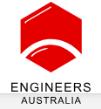
Engineers Australia is Australia’s national body for engineering. It offers a Chartered credentialing program based on competencies in 16 elements related to occupation and area of practice.
Its publications library includes open access papers, books and Engineers Australia technical journals including the Australian Journal of Multi-Disciplinary Enginering. The Professional standards library offers standards across areas of practice such as Systems Engineering, Risk Engineering, Aerospace Engineering and Biomedical Engineering.
Engineers Australia hosts, sponsors or participates in a wide range of conferences and major events, complemented by a portfolio of webinars, courses and networking opportunities
IEEE Systems Council

The IEEE Systems Council integrates activities across numerous IEEE societies. It embraces a broad approach to systems engineering, including systems thinking, while pursuing the IEEE’s general mission to foster technological innovation and excellence to benefit humanity.
Systems Council fields of interest include:
• Mission assurance
• Product transition: design, production, test, deployment, disposal
• Program and project management
• Quality assurance
• Requirements development and management
• Risk management
• Robust design, safety and human factors, security, usability, environmental aspects
• Systems architecture
• Systems engineering education, standards, processes, methodologies
• Systems modeling, simulation, integration, resilience
• Systems of systems
• Systems thinking
The Council publishes the IEEE Systems Journal and Open Journal of Systems Engineering (OJSE) and contributes to the Systems Engineering Body of Knowledge (SEBoK).
The Council supports a range of educational initiatives and hosts a resource center that features tutorials and talks from industry experts and professionals in the field of systems engineering.
Annual conferences include the IEEE International Systems Conference and the IEEE International Conference on Recent Advances in Systems Science and Engineering (RASSE). Additional conferences, e.g., the IEEE International Conference on Industrial Cyber-Physical Systems, are sponsored by the Council’s technology-focused member societies.
FEATURE ARTICLE
Institute of Industrial and Systems Engineers (IISE)

Founded in 1948, IISE is an international, nonprofit association that provides leadership for the application, education, training, research, and development of industrial and systems engineering. It’s mission is to serve those who solve the complex and critical problems of the world. IISE defines its target discipline as:
Industrial and systems engineering is concerned with the design, improvement and installation of integrated systems of people, materials, information, equipment and energy. It draws upon specialized knowledge and skill in the mathematical, physical, and social sciences together with the principles and methods of engineering analysis and design, to specify, predict, and evaluate the results to be obtained from such systems.
The IISE community is organized into industry-focused divisions, regionally-focused chapters and Technical Interest Groups. Societies within IISE include:
• Engineering and Management Systems (SEMS)
• Health Systems (SHS)
• Applied Ergonomics (AES)
IISE offers a mix of online and classroom training on topics such as Continuous Improvement, Work Measurement and Design, and Leadership and Management
The IISE Annual Conference and Expo is IISE’s premier event, complemented by a variety of events sponsored by allied and child societies.
IISE publications include the ISE Magazine and IISE Transactions.
International Association for Engineering, Modeling, and Simulation (NAFEMS)

NAFEMS is an international association, created in 1983, to foster the practical application of engineering simulation techniques. The mission of NAFEMS is to provide knowledge, international collaboration and educational opportunities for the use and validation of engineering simulation. Its goals include being recognized as independent authority and trusted source for communicating engineering simulation knowledge, and for sharing best engineering modeling, analysis, and overall simulation practices in developing reliable products and innovative solutions.
The NAFEMS Analysis, Simulation & Systems Engineering Software Strategies (ASSESS) Initiative is a broad reaching multi-industry initiative that seeks to guide and influence the software strategies for performing model-based analysis, simulation, and systems engineering. The ASSESS Initiative’s vision is “to lead every aspect of engineering simulation toward a more valuable and accessible future in the medium to long-term, leveraging the expertise and knowledge of top-level figures in industry, government, and academia.”
NAFEMS is organized into 11 regional groups and 20 technical working groups.
NAFEMS offers a broad portfolio of training courses and hosts a resource center with a diverse range of simulation-related publications. NAFEMS publishes the Engineering Modelling, Analysis & Simulation (EMAS) open-access journal and BENCHMARK Magazine.
FEATURE ARTICLE
NAFEM’s PSE (Professional Simulation Engineer) Certification allows engineers and analysts within the international simulation community to gain recognition for competencies acquired throughout their professional career.
NAFEMS hosts an annual World Congress as well as regional events and free webinars
International Council on Systems Engineering (INCOSE)

With over 20,000 members, INCOSE is the preeminent, in both scale and global impact, professional society that focuses on the discipline of systems engineering. INCOSE’s vision for systems engineering has been communicated in its Systems Engineering Vision 2035 document and the organization seeks to “Become the World’s Trusted Authority in Systems Engineering” in support of that vision.
INCOSE supports 50+ working groups and strategic initiatives from which stream a diverse range Technical Products that are available through the INCOSE Store. Other work products include the Systems Engineering Handbook, INSIGHT magazine, and Systems Engineering Journal. INCOSE hosts the Systems Engineering Tools Database (SETDB), co-developed with PPI. INCOSE is a key contributor to the Systems Engineering Body of Knowledge (SEBoK).
INCOSE operates a formal process for Systems Engineering Professional (SEP) certification that provides confirmation of an individual's competency in the discipline. They host two annual international events, the first each year is the International Workshop (IW) which brings together hundreds of very active members to roll up their sleeves and make progress on a variety of initiatives and work products. The second is the International Symposium (IS) which gathers 1000+ individuals annually to learn from one another and grow the discipline.
INCOSE sectors and local chapters host webinars and meetings on a frequent basis, generally monthly, and chapters often collaborate to host annual regional conferences.
INCOSE members are frequent contributors to PPI SyEN as authors of feature articles. PPI as been a member of the INCOSE Corporate Advisory Board (CAB) for two decades.
International Ergonomics Association (IEA)

The mission of the IEA is to elaborate and advance Human Factors / Ergonomics (HFE) science and practice, and to expand its scope of application and contribution to society to improve quality of life. IEA is an international federation of human factors and ergonomics societies and networks across the globe.
IEA offers a wide range of resources including HFE tools, HFE Core Competency Model, and numerous publications and journals
The IEA’s Triennal Congress is its premier event for HFE researchers and practitioners. Its federated societies are the source for multiple endorsed events and webinars.
International Federation of Automatic Control (IFAC)

IFAC, founded 1957, is a multinational federation concerned with automatic control and its representation in the fields of engineering, science and the impact of control technology on society. IFAC's areas of interest encompass all aspects of
FEATURE ARTICLE
control, ranging from: Systems and Signals; Design Methods; Computers, Cognition and Communication; Mechatronics, Robotics and Components; Cyber-Physical Manufacturing Enterprises; Process and Power Systems; Transportation and Vehicle Systems; Bio- and Ecological Systems; to Social Systems.
IFAC publishes multiple journals including Automatica, Control Engineering Practice, Journal of Systems and Control, and Nonlinear Analysis: Hybrid Systems.
In 2024, IFAC hosted over 20 conferences addressing various aspects of control systems engineering.
International Institute of Business Analysis (IIBA)

The IIBA is a professional association with over 30,000 members and 120 chapters in 40 countries worldwide. IIBA is leading the global business analysis community to achieve better outcomes through better analysis. Founded in 2003, the IIBA’s vision is to “shape the practice of business analysis to achieve better enterprise outcomes.”
IIBA hosts a KnowledgeHub that provides resources in areas such as:
• Business Analyis Planning and Monitoring
• Elicitation and Collaboration
• Requirements Life Cycle Management
• Strategy Analysis
• Requirements Analysis and Design Definition
• Solution Evaluation
IIBA operates a multi-tiered certification program to recognize the capabilities and experience of business analysis professionals. Candidates are certified against the IIBA’s standard, the Business Analysis Body of Knowledge (BABOK) Guide.
IIBA publishes the Analyst Catalyst blog as a means to share thought leader and member insights. IIBA conducts an annual Building Business Capability conference, sponsors multiple regional events around the globe and offers frequent chapter events, webinars and podcasts.
International Requirements Engineering Board (IREB)
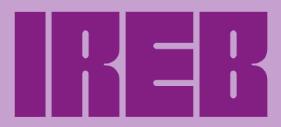
The IREB was created in 2006 with the vision to create an international, professional basis for Requirements Engineering (RE) and to improve the knowledge in RE and its application The organization structure for IREB includes:
• Working groups, e.g., Requirements Modeling, Research
• Special Interest Groups (SIGs), e.g., Sustainability, AI
• Local communities
The IREB is the developer and operating agent for two professional certification schemes:
• Certified Professional for Requirements Engineering (CPRE)
• Digital Design Professional (DDP)
FEATURE ARTICLE
The IREB recognizes training providers who support these certifications.
The Requirements Engineering (RE) Magazine is IREB’s primary publication.
The IREB hosts or sponsors multiple events including conferences and roundtables.
International Society for the Systems Sciences (ISSS)

The ISSS is among the first and oldest organizations devoted to interdisciplinary inquiry into the nature of complex systems, established in 1956 as the Society for General Systems Research, an affiliate of the American Association for the Advancement of Science, the Society adopted its current name in 1988 to reflect its broadened scope. ISSS exists “to encourage the development of theoretical systems which are applicable to more than one of the traditional departments of knowledge”.
ISSS activities are organized around 20+ Special Integration Groups (SIGs).
The ISSS hosts an Annual Meeting which has spanned the globe and publishes an academic journal that includes proceedings of this event. Frequent Mini-Symposia provide opportunities for knowledge sharing among ISSS members and for networking with broader communities.
International Test and Evaluation Association (ITEA)
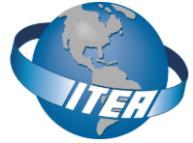
For over 40 years, ITEA, a not-for-profit education organization, has been advancing the exchange of technical, programmatic, and acquisition information among the test and evaluation community. ITEA is organized into 30 regional chapters in the United States, Europe and Australia. Volunteer efforts in the chapters address multiple initiatives including student scholarships, professional growth and recognition and event hosting.
ITEA offers multiple professional development opportunities via training on Test & Evaluation (T&E) Planning, Design, Execution and Data Analysis, Evaluation and Reporting in support of its Certified Test & Evaluation Professional (CTEP) program. Members have access to a library of recorded webinars and presentations.
ITEA publishes the quarterly Journal of Test and Evaluation that contains technical articles, industry news and conversations with T&E experts.
ITEA hosts an annual T&E Symposium and multiple technology-focused events (e.g., Directed Energy, AI, Test Instrumentation, and Cybersecurity) in a typical year.
ISACA

ISACA is a global professional association and learning organization with 228 chapters and 180,000 members who work in digital trust fields such as information security, governance, assurance, risk, privacy and quality. ISACA is committed to the advancement of digital trust by empowering IS/IT professionals to grow their skills and knowledge in audit, cybersecurity, emerging technology and more. Originally known as the Information Systems Audit and Control Association, ISACA was founded in 1967.
ISACA offers a Credentialing Program, awarding certifications in multiple IT-related areas, e.g.,
FEATURE ARTICLE
Certified in Risk and Information Systems Control (CRISC) and Certified Information Security Manager (CISM).
ISACA resources include IT frameworks and variety of publications, including the ISACA Journal.
ISACA hosts an annual global Virtual Conference and North America Conference, plus additional regional and topic-focused events.
Lifecycle Modeling Organization (LMO)
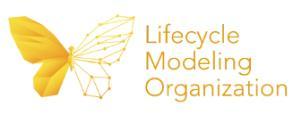
The LMO develops and maintains an open-source modeling language that is structured and behavioral, the Lifecycle Modeling Language (LML). LML provides a simple way to understand and communicate cost, schedule, and performance design information to all stakeholders in a standard manner.
The LMO hosts the MBSE-CON Conference to promote the effective use of LML as an enabler for Model-Based Systems Engineering (MBSE).
LOTAR
LOTAR is an international consortium of aerospace manufacturers focused on the creation and deployment of a series of standards for LOng-Term Archiving and Retrieval of digital data. The LOTAR project is organized in different workgroups including 3D Mechanical CAD, Product Data Management (PDM), Composites, Electrical Harness, Model-Based Systems Engineering (MBSE), and Engineering Analysis and Simulation (EAS).
The main deliverable of the LOTAR project is the LOTAR standard, based on the ISO 14721 Open Archival Information System (OAIS) Reference Model.
Modelica Association
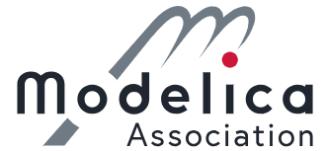
Modelica is a language for modeling of cyber-physical systems, supporting acausal connection of components governed by mathematical equations to facilitate modeling from first principles. It provides object-oriented constructs that facilitate reuse of models, and can be used conveniently for modeling complex systems containing mechanical, electrical, electronic, magnetic, hydraulic, thermal, control, electric power or process-oriented subcomponents.
The Modelica Association is a non-profit, non-governmental organization with the aim of developing and promoting open and coordinated standards for system modeling and simulation. This includes:
• Development and specification of the open Modelica language and associated modeling libraries
• Development and distribution of collaborative industrial standards for modeling and simulation
The 30+ organizations that are members of the Association collaborate on deliverable-focused projects such as:
• Modelica Language
• Modelica Libraries
FEATURE ARTICLE
• Functional Mock-up Interface (FMI) Standard
• System Structure and Parameterization (SSP) Standard
• Distributed Co-Simulation Protocol (dcp) Standard
• Functional Mock-up Interface for Embedded Systems (efmi) Standard
The Association hosts an annual International Modelica Conference series and publishes the proceedings from these events.
Multisolving Institute
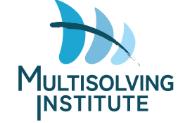
The mission of the Multisolving Institute is to provide theory, evidence, and practical tools for people to address climate change, equity, health, well-being, and biodiversity as connected issues. The Institute defines multisolving as “when one investment of time or money solves many problems at once.”
The Institute hosts a YouTube channel that features videos from its staff and partners. Resources include the Multisolving book, Framework for Long-term, Whole-system, Equity-based Reflection (FLOWER) online community engagement tool, and a library of multisolving webinars.
National Defense Industrial Association (NDIA)

The U.S. NDIA drives strategic dialogue in national security by identifying key issues and leveraging the knowledge and experience of its military, government, industry, and academic members to address them. NDIA is non-profit, educational association that was founded to educate its constituencies on all aspects of national security.
NDIA comprised of its affiliate organizations, regional chapters and technology-focused divisions, with 1,800 corporate and over 60,000 individual members.
NDIA offers a wide range of events each year that are relevant to systems engineering practitioners within and across military and technology domains.
National Institute of Standards and Technology (NIST)

Founded in 1901, NIST is the United States’ oldest physical science laboratory. As part of the U.S. Department of Commerce, NIST develops technology, measurement methods and standards to increase U.S. industrial competitiveness.
From the perspective of systems engineering, the research of the NIST Information Technology Laboratory is the source for NIST’s globally-recognized Risk Management Framework and Cybersecurity Framework. The NIST Engineering Laboratory focuses on Advanced Manufacturing, Automation, and Autonomous Systems, Advanced Manufacturing Data Infrastructure and Analytics, Intelligent Systems, and Systems Integration.
Object Management Group (OMG)

The OMG Standards Development Organization (SDO) is a global, open membership, non-profit consortium whose members have collaborated to spearhead the development of over 250 standards in OMG’s 35 years of existence. Standards of particular relevance to systems engineering practitioners include:
• Systems Modeling Language (SysML)
FEATURE ARTICLE
• Business Process Model and Notation (BPMN)
• Decision Model and Notation (DMN)
• Business Architecture Core Metamodel (BACM)
OMG standards cover a broad range of the technologies on which modern systems depend in domains such as space, defense, healthcare, robotics and manufacturing. The OMG’s Journal of Innovation highlights technological advances and standards progress in these domains.
OMG offers certification programs for SysML, Business Process Management (BPM), and the Unified Architecture Framework
The OMG holds quarterly Technical Meetings to plan collaborative efforts, advance the progress of standards and to share new insights and challenges with members in the form of Summits on topics such as Business Architecture or UAF
The OMG Systems Modeling Community shares practices that promote the adoption and advancement of Model-Based Systems Engineering (MBSE). PPI is an Influencing Member of the OMG.
OMG has launched an AI Joint Working Group that combines the resources of the OMG’s Digital Twin Consortium and Augmented Reality for Enterprise Alliance (AREA) to focus on AI-enabled digital engineering, simulation, modeling, and design.
PDES Inc.
PDES, Inc. is an international consortium committed to accelerating the development and implementation of standards that enable enterprise integration and Product Lifecycle Management (PLM) interoperability. Founded in 1988, the organization includes members from industry, government and academia.
PDES, Inc. supports the Digital Enterprise through the development and implementation of information standards to support Model-based Engineering, Model-based Manufacturing, and Modelbased Sustainment from design to archival and retrieval.
Product Data Management Implementor Forum (PDM-IF)
PDM-IF is a company membership-based organization that develops international PDM interoperability recommended practices. PDM-IF includes a User Group (industrials), and Implementor Group (vendors). The User Group defines uses cases, derived requirements and best practices across the product lifecycle, while the Implementor Group defines recommended practices and conducts verification to improve data exchange quality.
Product Development Management Association (PDMA)

PDMA is an international association of professionals dedicated to improving product development and innovation processes and outcomes across a diverse range of industries. PDMA is organized as 20+ chapters around the globe.
PDMA publishes the Journal of Product Innovation Management (JPIM), a monthly Connections enewsletter and variety of product development and innovation management books including the PDMA Body of Knowledge and PDMA Handbook of Innovation and New Product Development
FEATURE ARTICLE
The PDMA Knowledge Hub (kHUB) facilitates the creation and exchange of product management and development knowledge and best practices to support individual professional development and organizational innovation.
PDMA hosts an annual Inspire Innovation Conference and JPIM Research Forum. PDMA chapters hosts frequent learning and collaboration events.
PDMA offers and administers the New Product Development (NPD) Professional Certification.
prostep ivip Association

The prostep ivip association is an independent Germany-based, but international organization with 30 years of experience in supporting multilateral collaboration among manufacturers, suppliers and IT providers. The association develops end-toend process, system and data integration for all phases of the product development process.
The association is organized around 25 active project groups on topics such as Smart Systems Engineering (SmartSE), Collaborative Systems Engineering (CSE) Checklist, Digital Data Package (DDP), MBx Interoperability Forum (MBx-IF), and Long-term archiving and retrieval (LOTAR).
The association hosts a publication library consisting of specifications, white papers, best practice guides, test reports, benchmarks, etc.
The prostep ivip Symposium is the association’s premier annual event, supplemented by a variety of regional events and webinars.
Resilience Engineering Association (REA)

Resilience Engineering (RE) is a trans-disciplinary perspective that focuses on developing on theories and practices that enable the continuity of operations and societal activities to deliver essential services in the face of ever-growing dynamics and uncertainty. RE emerged from the safety science community with a focus on complexity, non-linearity, inter-dependencies, emergence, formal and informal social structures, threats and opportunities.
The REA is a community of thought leaders and industry experts, united to navigate complexity in an era of rapid, unpredictable change. It brings together some 600 members from academia and industry, across the globe, to collaborate to advance the field.
The REA conducts a biennial Symposium, that includes a Young Talents Workshop for student researchers.
The REA provides numerous types of educational resources including:
• Podcasts
• Videos
• Publications
• Webinars
• Newsletters
• Symposia Proceedings
FEATURE ARTICLE
Learn more about the distinctive features of Resilience Engineering here.
SDL Forum Society

The SDL Forum Society, formally established in 1995, disseminates education for the users of the ITU-T and other related System Design Languages (SDLs) such as ASN.1, MSC and TTCN from ITU and UML from OMG. A primary function of the Society has been the promotion of the SDL Forum series of events, including the annual System Analysis and Modelling (SAM) Conference.
The Society provides awareness of available SDL tools and information resources including books, papers, conference proceedings and standards
Smart Cities Council (SCC)

The SCC is a global, member-driven community that brings together private and public sector organizations and not-for-profits (NGOs and academic institutions) to align Smart Cities strategies and enabling technologies for the benefit of citizens everywhere. SCC programs and services include:
• Accelerator programs for communities and business startups
• Advisory services including master plans, frameworks and digital transformation
• Education and training on Smart City Management, Building Information Management (BIM), Virtual Reality for Architecture and Parametric Design delivered through webinars, podcast and in-person engagements
• Task Forces on Smart Airports, Smart Tourism and Sustainable Infrastructure
The SCC hosts or sponsors multiple events including the annual Smart City Expo World Congress, along with multiple gatherings with a regional or technology focus.
Society for Modeling and Simulation International (SCS)

Founded in 1952, the SCS is a scientific and technical society dedicated to advancing the use of Modeling and Simulation to solve real-world problems. The vision of SCS is “to unite professionals in the Modeling and Simulation industry to leverage modern technologies and established processes.” Areas of interest include model representation (discrete, continuous, monte carlo, system dynamics, etc.), model execution and model composition.
SCS publications include:
• Simulation: The Transactions of the Society for Modeling and Simulation International
• The Journal of Defense Modeling and Simulation: Applications, Methodology, Technology (JDMS)
• The Body of Knowledge (BoK) for Modeling and Simulation
The SCS hosts its Annual Modeling and Simulation Conference (ANNSIM) and the Power Plant Simulation Conference
FEATURE ARTICLE
Society of Decision Professionals (SDP)

The SDP seeks to be the world forum on decision making. SDP members are dedicated practitioners, committed to mastering both the art and science of decision-making and making it practical and applicable in real-world contexts. The SDP curates, communicates, and cultivates a living body of knowledge comprised of up-to-date, proven approaches and standards of excellence for decision-making. The SDP promotes its Decision Quality framework as the basis for decision excellence.
The SDP is organized by Interest Groups (Innovation, Decision Education, Probability of Success, etc.) and 10 local chapters.
The SDP Library offers a mix of members-only and curated public content
In addition to a portfolio of chapter meetings and educational events, the SDP conducts an Annual Conference & Workshops event
Society of Women Engineers (SWE)
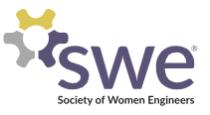
SWE has over 70 years experience in promoting the success of women engineers. Its mission is to “empower women to achieve their full potential in careers as engineers and leaders; expand the image of the engineering and technology professions as a positive force in improving the quality of life, and demonstrate the value of diversity and inclusion.”
SWE programs include its Advance Learning Center, digital credentialing, and a Mentoring Network. The STEM Pathways digital library helps young women investigate STEM careers.
SWE hosts an annual flagship event that is billed as the world’s largest conference for women In engineering and technology.
Software Engineering Institute (SEI)

The SEI at Carnegie Mellon University (CMU) researches complex software engineering, cybersecurity, and AI engineering problems; creates and tests innovative technologies; and transitions maturing solutions into practice. Working with the U.S. Department of Defense since 1984 as a Federally Funded Research and Development Center (FFRDC), SEI conducts R&D in software engineering, systems engineering, cybersecurity, and many other areas of computing, working to introduce private-sector innovations into government. SEI helps its constituents by maturing tools, technologies and engineering practices.
SEI is organized as three divisions:
• Artificial Intelligence (AI)
• CERT (Cybersecurity)
• Software Solutions
The SEI research program is arranged by technology-focused topics such as MBSE, Enterprise Risk and Resilience Management, Agile and AI Engineering
The SEI hosts an immense digital library of open-access resources including reports, conference
FEATURE ARTICLE
papers, white papers, podcasts, webcasts and videos. SEI offers software tools and associated methods resources that are produced through its research. The SEI offers free-to-use educational curricula in Software Assurance, Software Engineering and Survivability/Information Assurance.
The SEI offers a variety of professional credentials through its certification programs.
The SEI is a frequent contributor to a wide range of conferences and industry forums.
System Dynamics Society (SDS)

The SDS is an international, multi-faceted, and diverse organization with 1300+ members from different fields and industries across 75 countries. Organized around 20+ chapters and 15+ Special Interest Groups (SIGs), the SDS provides a unified voice supporting the advancement of systems thinking and System Dynamics computer simulation.
The SDS publishes the System Dynamics Review (SDR) and other technical products, and maintains a library of additional resources such as articles, books, blog posts, applications and models. The SDS sponsors numerous learning events and maintains a crowd-sourced list of online courses on system thinking and system dynamics.
The International Systems Dynamics Conference is the premier annual event for the Society.
Systems Engineering Research Center (SERC)

The SERC is a University Affiliated Research Center (UARC) of the U.S. Department of Defense, leveraging the research and expertise of faculty, researchers, and students from more than 20 collaborating universities throughout the United States. SERC manages a research program organized around areas:
• Enterprises and Systems of Systems (ESOS)
• Trusted Systems (TS)
• Systems Engineering and Systems Management Transformation (SEMT)
• Human Capital Development (HCD)
SERC communicates its research results through program reports, workshops and annual research reviews. SERC has created multiple software tools to facilitate, communicate and exploit its research. SERC’s education mission includes sponsoring a Doctoral Fellow Program and matching research students with engineering projects through its Capstone Marketplace. SERC is a key contributor to the Systems Engineering Body of Knowledge (SEBoK) and a series of books on Complex Systems and Enterprises and Systems Engineering and Management.
Through the SERCTALKS webinar series, SERC facilitates a collaborative dialogue between System Engineering thought leaders in academia, government and industry.
Systems Innovation Network

The Systems Innovation Network is a global online platform supporting individuals and organizations on their journey of learning and applying systems innovation ideas and methods towards addressing complex challenges. Its mission is to build the world’s capacity
FEATURE ARTICLE
for systems innovation, to better understand and address complex challenges and co-create a world where systems work for all.
The Network is designed to enable an innovation journey that consists of four phases:
• Awareness – through communications
• Connecting – forming collaborative relationships with others using System Innovation Hubs
• Learning – about innovation ideas and methods
• Co-creating – solutions to challenging problems in System Innovation Labs
The Network delivers subscription-based learning content in the form of starter guides, concept cards, video courses and e-books.
The Design Society (DS)

The DS, established in 2000, is an interdisciplinary community of academics and industry practitioners with the goal of developing and promoting a robust, usable and scalable means of designing complex solutions that a sustainable and globalized society needs to thrive in the 21st century. The mission of the DS is to promote the development and propagation of design knowledge across all disciplines.
The DS is organized into regional chapters and Special Interest Groups (SIGs)
The DS collaborates with Cambridge University Press to publish the Design Science open access journal. The DS video library provides access to design-focused lectures and keynotes.
The DS conducts, sponsors and supports multiple conferences in a typical year, such as:
• International Conference on Engineering Design (ICED)
• International Conference on Engineering & Product Design Education (E&PDE)
• International Dependency and Structure Modelling (DSM) Conference
• International Conference on Axiomatic Design (ICAD)
Waters Center for Systems Thinking (WCST)

The WCST is a non-profit foundation with forty years experience in delivering systems thinking know-how to a diverse set of communities and individuals (from kindergarten students through Fortune 500 CEOs). Their mission is to “help people understand what systems thinking is and how to incorporate the Habits, tools and concepts of systems thinking into their work and life to achieve desired results.”
In addition to interactive webinars, WCST offers self-paced online courses of systems thinking habits, tools and archetypes in its Thinking Tools Studio. The WCST shares its knowledge by publishing case studies and a systems thinking blog. The Center offers an intensive 1-year Systems Thinking Advanced Facilitator Credential program.
Observations
One takeaway from a comparison of these organizations is the commonality of the methods by which they accomplish their mission. Although focused on different aspects of systems engineering, most of
FEATURE ARTICLE
the organizations have similar structures (chapter, working groups, projects) and leverage the same types of media (journals, webcasts, white papers, podcasts, etc.) and events to accomplish their goals.
It’s hard to appreciate the truly incredible scope and diversity of the global systems engineering community through this partial list of 36 organizations, each of which contributes to the whole. The emergent properties of this system of autonomously managed systems are even more difficult to grasp.
Even more daunting is the ability to discover, visualize and understand the implications of the collaborative and competitive interactions of these organizations on the progress of the systems engineering practice. A more complete organizational catalog would multiply the number of potential interactions to consider.
The author appeals to the readers of PPI SyEN to assist in the identification of active and potential high-value interactions between these and other organizations.
1. Where are you aware of two or more organizations collaborating for the benefit of our global systems engineering capabilities?
2. Where are there potentially valuable inter-organization collaboration opportunities that should be pursued?
3. Where does competition between these organizations diminish our capabilities to address global challenges?
Please email your insights to PPISyEN@PPI-Int.com
Look for a follow-on PPI SyEN article to highlight additional organizations (based on your feedback and a longer-term survey of PPI SyEN editions) and to identifying promising interactions among these communities.
About the Author

John Fitch is a Principal Consultant and Course Presenter for Project Performance International. John brings over four decades of systems engineering, engineering management, consulting and training experience to the PPI team. In 2012, John was certified by INCOSE as an Expert Systems Engineering Professional (ESEP).
Within the field of systems engineering, John’s career has focused on decision management, requirements management, risk management, systems design & architecture, product/technology road-mapping and innovation. In addition to defense/aerospace, John has guided initiatives in domains such as communications systems, software, energy, nanotechnology, medical devices, manufacturing systems, knowledge management and business process improvement.
SYSTEMS ENGINEERING RESOURCES
Useful artifacts to improve your SE effectiveness

Book: INCOSE Needs and Requirements Manual
Wiley has published the 2nd edition of INCOSE Needs and Requirements Manual: Needs, Requirements, Verification, Validation Across the Lifecycle. In this edition, editors Lou Wheatcraft, Michael Ryan and Tami Katz provide updated details for systems engineering practitioners on how to successfully implement the processes and activities in the INCOSE Systems Engineering Handbook, 5th edition.
The 528-page guide presents product development and systems engineering practices, activities, and artifacts from the perspective of needs, requirements, verification, and validation across the system lifecycle.
The chapter outline includes topics such as:
• Definitions and Concepts
• Information-Based Needs and Requirement Development and Management
• Lifecycle Concepts and Needs Definition
• Needs Verification and Validation
• Design Input Requirements Definition
• Requirements Verification and Validation
• Design Verification and Design Validation
• Production Verification
• System Verification and Validation Common Principles
• System Verification and System Validation Processes
• The Use of OTS System Elements
• Supplier-Developed SOI
• Needs, Requirements, Verification, and Validation Management
• Attributes for Needs and Requirements
• Desirable Features of an SE Toolset
ISBN: 978-1-394-15276-6
The INCOSE Needs and Requirements Manual is available in both E-Book and Print formats. INCOSE members can download the guide for free and get a 20% discount on a hard copy.
Book: Don't Panic! The Absolute Beginner's Guide to Systems Thinking

The Don’t Panic series, has been developed by the INCOSE UK community to provide thorough, short, and easily-digestible guides on topics related to systems engineering. The most recent addition to series is Don't Panic: The Absolute Beginner's Guide to Systems Thinking by Robert (Rob) Black.
SYSTEMS ENGINEERING RESOURCES
Beginning with the recognition that System Thinking is a key competency in understanding and addressing broad socio-technical challenges, the guide elaborates how System Thinking can help engineering practitioners:
• Identify and characterize complex problem or opportunity scenarios
• Recognize, relate, and engage extended interests in order to make more informed decisions
• Select and use appropriate systems concepts and methods to make, manage, implement, and monitor those decisions more effectively
This book is available in both paperback and e-book formats from the INCOSE UK Store
Learn more at the LinkedIn announcement of this book release.
ISBN 978-1-7384267-6-8
System Dynamics Resource Recommendations

Recommended Books
The System Dynamics Society (SDS) hosts or recommends a variety of system dynamics resources in the form of books, videos, blogs, webinars and papers.
The SDS has identified several system dynamics “classics” that have shaped the discipline.
• Principles of Systems, by Jay W. Forrester, offers a comprehensive introduction to the core concepts and methodologies used to analyze complex systems across disciplines.
• Growth of a New Product, an e-book by Ole C. Nord, addresses the dynamics of corporate growth, emphasizing the critical role of capacity-acquisition policies in the successful introduction of new products.
• Resource Acquisition in Corporate Growth, an e-book by David Packer, explores the dynamics of corporate growth and resource management, combining theoretical insights with practical tools.
Additional free e-books that may be of interest include:
• Introduction to Systems Thinking, a beginner’s guide that uses an analogy of writing a composition to walk you through the language, concepts, and process of Systems Thinking. Also available in an expanded Business Edition.
• The Delft Method for System Dynamics, which emphasizes learning by doing, covering topics like causal loop diagrams, model building, and policy analysis for students and educators.
Also recommended are a series of books for children and teens to help raise up the next generation of systems thinkers. The Billibonk and Frankl series includes four titles, each which illustrates one or more system archetypes in a fun story-based format:
• Billibonk and the Thorn Patch
SYSTEMS ENGINEERING RESOURCES
• Billibonk and the Bugs
• The Floods of Knith
• The Dark Jungle
Other resources
Other recently recommended resources from various system dynamics practitioners and researchers include:
• Building a More Equitable World Using Systems Thinking (webinar video)
• Connecting Models and Movements (SDS Health Policy SIG October Meeting Video)
• Enabling and Accelerating Model-based Decision Support (webinar video)
• Integrating Dynamic Modeling and Simulation into Your Socio-Ecological Courses (webinar video)
• Micro, Meso, Macro: Generic Structures of Social Complexity for Defense Systems (webinar video)
• Revealing causal links in complex systems (MIT News article)
Also highlighted is the November issue on the System Dynamics Review, with 17 papers addressing the Qualitative Aspects of System Dynamics Modeling.
New NAFEMS Engineering Simulation Resources

The mission of NAFEMS includes being globally recognized as an “independent authority and trusted source for communicating engineering simulation knowledge, and for sharing best engineering modeling, analysis, and overall simulation practices in developing reliable products and innovative solutions.” In support of this mission, NAFEMS publishes a wide variety of premium engineering simulation resources for its 30,000+ members. New offerings include the following books, papers and reports.
Evolution of Simulation to Support Automotive Crash
The report includes a history of crash simulation over a 50-year period, highlighting the business drivers for each decade of progress. This is described in relation to the important stakeholders - the automotive OEMs, academia, the supply chain, and the supporting ecosystem of consultants and software providers. Progress is reviewed through the lens of ‘value streams’, such as cost, time, quality, innovation, and market leadership, with additional discussion on how those value streams have evolved and might be prioritized today.
Expert Perspectives on Modelling and Simulation in Engineering
This paper summarizes work undertaken to determine the industry's current attitude to the use of simulation to support engineering activity. The project progressed using a series of interviews with subject matter experts, supported by literature reviews and other evidence and experience gained by the project team.
Getting Started with Engineering Data Science
This paper emphasizes the vital role that data science now plays in engineering fields before describing the data science process and discussing the distinctive qualities of engineering data. It provides examples of value propositions and data science applications across the lifecycle. To conclude, guidance is provided on how to get started with engineering data science and machine
learning.
Guidelines for Validation of Engineering Simulations
This book focuses specifically on the validation of physics-based simulation models - providing guidance for industry practitioners to help them overcome obstacles and enhance the credibility of their simulation results. The book makes two key contributions:
• Formally introduces the concept of a “spectrum of validation methods”.
• Formally defines of the attributes of validation rigor that impact simulation credibility
Understanding the Different Forms of Democratization of Engineering Simulation
This ASSESS Initiative Strategic Insight Paper provides information, insights, and clarity on the different forms of Democratization of Engineering Simulation including different purposes, requirements, valid approaches and issues.
Search the NAFEMS Resource Center for other topics of interest. Join NAFEMS to access these resources.
Product Development and Innovation Resources

The Product Development Management Association (PDMA) hosts a Knowledge Hub (kHUB) that offers a wide variety of product development and innovation management resources in the form of blogs, podcasts, videos, conference presentations, feature articles and whitepapers.
Recent recommendations include:
• A Creative Thinking Process: Problem Abstraction as a Source for Ideation in Product Design (article)
• Adopting Artificial Intelligence for New Product Development: The RAPID Process (article)
• Best Practices in New Product Development and Innovation: Results From PDMA's 2021 Global Survey (JPIM research article)
• Confessions of a Community Manager (blog)
• From Concept to Market: Inside Food Product Development (article)
• How Do We Move Forward Deploying AI for New Product Development (podcast)
• How to 10x Your Product Management with Generative AI (chapter webinar)
• Ideation Techniques: Conceptualizing New Products and Services (blog)
• Innovate Your Planning Process with Quartz (webcast)
• Let’s Flow Ideation, Conceptualization, and Design Thinking in Product Design (article)
• Mitigating the definitional quagmire in innovation research (JPIM research article)
• Orchestrating resources with suppliers for product innovation (JPIM research article)
• Pixar’s Rules of Storytelling Applied to Product Managers & UX Designers (article)
• Selecting the Right AI Solutions for Use in New Product Development (article)
• The Adoption and Performance Impact of AI in New Product Development: A Management Report (article)
• The AI-augmented crowd: How human crowdvoters adopt AI (or not) (JPIM research article)
SYSTEMS ENGINEERING RESOURCES
Access to kHUB is free and open to the public. Full text access to JPIM research articles requires a PDMA membership or institutional access to the JPIM through the Wiley Online Library; however, kHUB publishes JPIM article abstracts and key takeaways.
Create a guest account or join PDMA here
Upcoming PPI Live-Online ™ and In-Person Systems Engineering Five Day Courses
Click here to view the full schedule or register for an upcoming courses
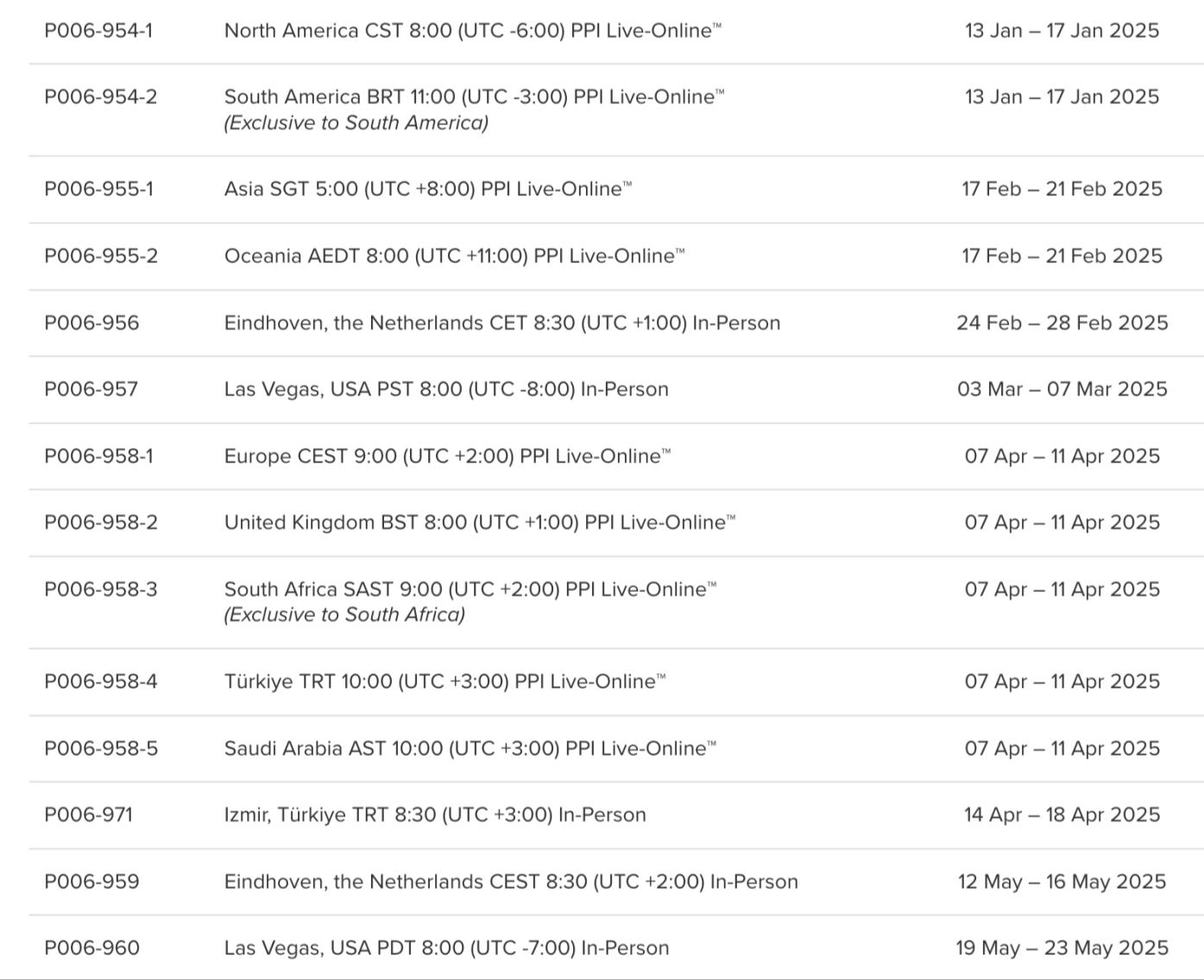

State-dependent behavior
FINAL THOUGHTS FROM SYENNA FINAL THOUGHTS FROM SYENNA
Systems engineering practitioners generally agree that a human being may be thought of as a system who exists as part of a larger system of other people and the broader natural and built (humanengineered) environment. Experience teaches us that such a human system will not always produce the same outputs despite being given the same set of inputs.
A spouse, upon receipt of the request to perform a routine honey-do task (Please take out the trash, Dear), may on Tuesday eagerly jump in with both feet but on Thursday reject the request outright with a less than pleasant retort.
A toddler, when asked if he/she wants a particular toy or food item or will often vary their response and enthusiasm dramatically based on the length of time since their last nap or depending on the presence of other children with whom they may be asked to share.
Inanimate systems are generally better (more consistently) behaved but also exhibit situational functionality and performance. Indeed, we try to engineer out variability in performance across a wide range of environmental conditions to create a consistent and predictable user experience. However, my smartphone battery doesn’t hold the charge it once did. Mechanical wear on metal parts leads to increased vibration such that my ceiling fan is no longer as quiet as when first installed. And the cumulative effects, such as thermal stress, of a load profile or duty cycle seem to influence my current experience with most systems.
What can explain this variability in behavior? If the functions of a system are each the transformation of inputs into outputs, shouldn’t identical or nearly identical inputs yield essentially the same results? It turns out that physical systems, whether living or inanimate, have a built-in memory through which a system may find itself in different conditions or “states”. And much of system behavior is statedependent. A system in State A (ON) may perform different functions than in State B (Off). A system in State A (Intact) or State B (Damaged or Failed) may perform the same functions, but at significantly different levels of performance.
Fully understanding a system’s behavior typically requires that we construct a model of the system’s states and modes and overlay the system’s functional model on this canvas. If the states of a system represent the conditions of its existence or its configurations and its modes represent groups of system functions, we have the tools to explain this mystery:
The same inputs to a system don’t guarantee the same outputs 365x24x7
I pose a question to the readers of PPI SyEN:
Will AI, with long memories of past interactions with humans, always produce the same outputs for a given set of inputs?
If not, do we need to develop a new method for doing “States and Moods” analysis?
Regards, Syenna
